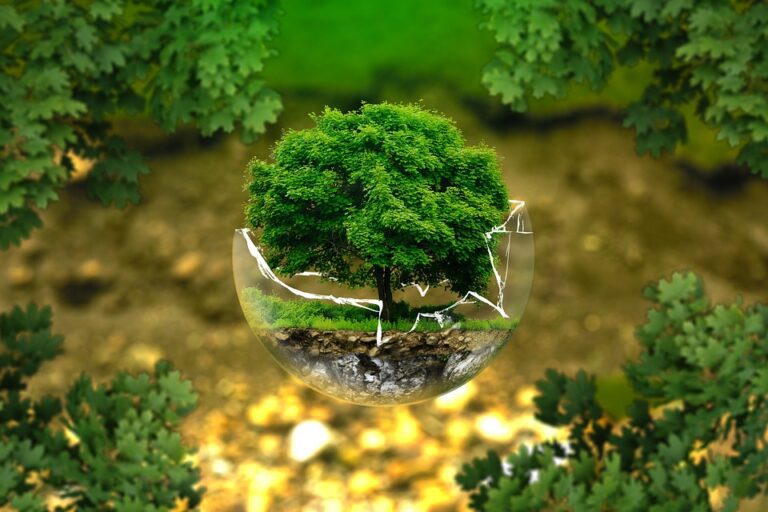The Price of Progress: Industrialization and Its Environmental Toll
The Industrial Revolution, which began in the late 18th century, initiated a period of unprecedented technological, economic, and social change. Mechanized manufacturing, advancements in transportation, and the rise of urban centers transformed societies across the globe. Yet, behind the gleaming façade of progress lurks a stark reality: the significant environmental toll exacted by industrialization. As we examine the legacy of this period and its ongoing repercussions, it becomes clear that the price of progress extends far beyond economic measures.
The Rise of Industry
Industrialization brought about immeasurable benefits. The advent of machinery significantly increased production capabilities, leading to a flourish of goods and an increase in standards of living. Steam engines and later, internal combustion engines, catalyzed the development of railways and automobiles, transforming mobility and commerce. The mass production of steel revolutionized building construction, allowing for the rise of skyscrapers and expansive infrastructure projects.
However, these advances came with an insidious cost. Factories belching smoke, pollution spewing from chimneys, and the rampant exploitation of natural resources marked the era. Forests were felled for timber and cleared for expanding cities; waterways became conduits for industrial waste; and the air thickened with the by-products of burning fossil fuels.
Environmental Degradation
The environmental impacts of industrialization are multifaceted. Air pollution is one of the most visually and physically evident effects. The burning of coal and other fossil fuels released vast quantities of carbon dioxide, sulfur dioxide, and other pollutants into the atmosphere. According to the World Health Organization (WHO), about 7 million people die every year from exposure to fine particles in polluted air, which can lead to cardiovascular and respiratory diseases.
Water pollution is another dire consequence. Industrial operations discharged untreated waste into rivers and oceans, contaminating water sources and destroying aquatic ecosystems. The U.S. Environmental Protection Agency (EPA) reported that over 80% of ocean pollution comes from land-based activities. Heavy metals, toxic chemicals, and untreated sewage led to waterborne diseases and disrupted the livelihoods of communities dependent on fishing and clean water.
Deforestation and soil degradation resulted from the relentless demand for agricultural expansion and raw materials. The World Bank estimates that approximately 7.3 million hectares of forest are lost annually due to these activities. The removal of forests not only disrupted habitats and led to the loss of biodiversity but also contributed to soil erosion, reducing the land’s ability to support future crops.
Climate Change and Global Impact
One of the most pressing and far-reaching consequences of industrialization is climate change. The massive increase in greenhouse gas emissions due to industrial activities has led to a significant rise in global temperatures. NASA’s Global Climate Change data shows that Earth’s average temperature has risen by about 1.18 degrees Celsius since the late 19th century. Melting polar ice caps, rising sea levels, and extreme weather events are just a few manifestations of this global crisis.
Moreover, climate change exacerbates existing environmental issues, creating feedback loops that further harm ecosystems and human societies alike. Developing nations are particularly vulnerable. Many emerging economies face the paradox of striving for industrial growth while grappling with the environmental degradation that accompanies such progress. India, for instance, has seen rapid industrialization but also struggles with severe air and water pollution.
Towards a Sustainable Future
Recognizing the environmental toll of industrialization is the first step towards mitigating its effects. Over the past few decades, there has been a growing acknowledgment of the need for sustainable development – a framework that seeks to balance economic growth with environmental protection and social equity. Innovations in renewable energy, stricter environmental regulations, and greater corporate responsibility give hope for a more sustainable trajectory.
Green technologies, such as solar and wind power, offer alternatives to fossil fuels. Advances in recycling and waste management are reducing the strain on natural resources. Policies aimed at reducing carbon footprints and protecting natural habitats can guide industries towards more sustainable practices. For example, the Paris Agreement, a legally binding international treaty on climate change, aims to limit global warming to well below 2 degrees Celsius compared to pre-industrial levels.
However, achieving a balance requires cooperation at all levels, from individual behavior to international policy. Public awareness and education about the environmental impacts of industrial activities are crucial. Moreover, governments, industries, and communities must work together to implement strategies that promote sustainable production and consumption.
Conclusion
The Industrial Revolution marked a turning point in human history, driving progress at an unprecedented scale. However, this progress came at a significant environmental cost. As we advance further into the 21st century, it is imperative to acknowledge and address the environmental toll of past and present industrial activities. By embracing sustainable practices and fostering a global commitment to environmental stewardship, we can hope to mitigate the adverse effects of industrialization and ensure a healthier planet for future generations. The price of progress need not be synonymous with environmental degradation; with conscious effort, we can pave the way for sustainable development that benefits both humanity and the Earth.
References
- World Health Organization (WHO). "Ambient (outdoor) air pollution." Available here.
- U.S. Environmental Protection Agency (EPA). "Sources of Marine Debris." Available here.
- World Bank. "Deforestation and Forest Degradation." Available here.
- NASA. "Global Climate Change: Vital Signs of the Planet." Available here.
By understanding the history and impacts of industrialization, it is within our grasp to advocate for and adopt practices that ensure a balanced and sustainable future.
